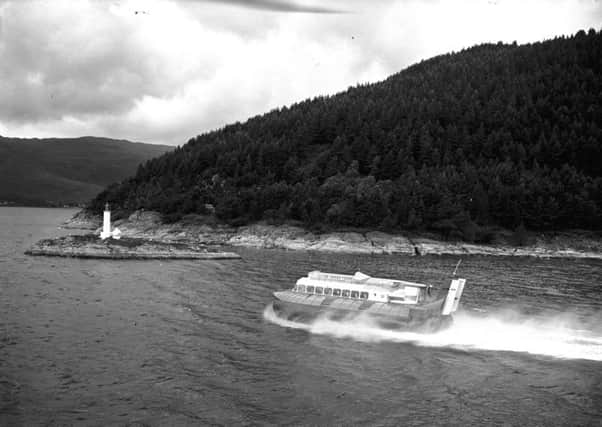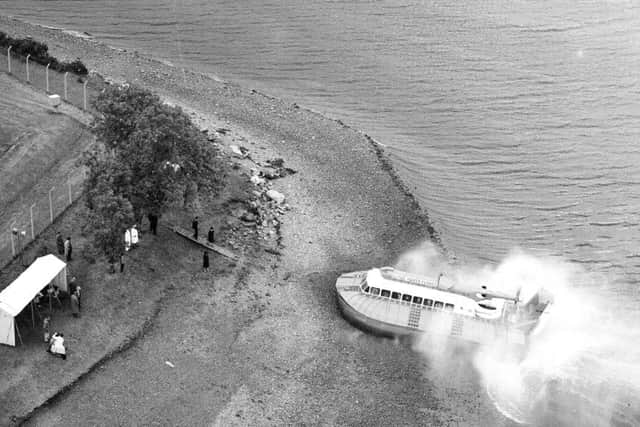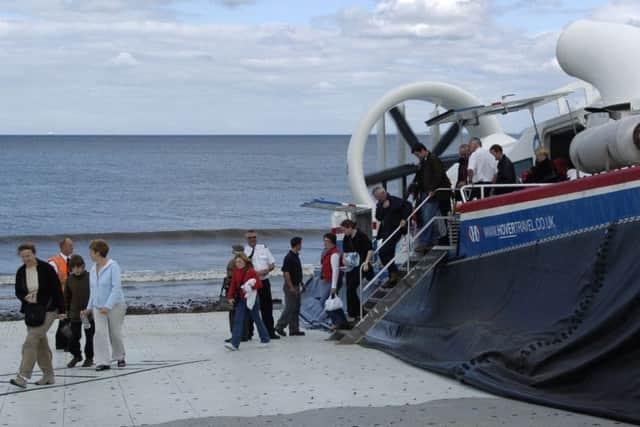The story of Scotland's hovercrafts and why they failed


Hovercraft services have been trialled in Scotland extensively over the past 50-odd years, but only for brief periods.
At one point, it was envisaged that, in some areas of the country, hopping on a hovercraft would become as common as taking the bus.
Advertisement
Hide AdAdvertisement
Hide AdBut, despite repeated attempts to make it a success, the hovercraft never managed to establish itself as a viable method of public transport.


Beginnings
An early patent for an air cushion ship was filed in the 1870s by shipbuilder Sir John Isaac Thornycroft, but it would be a number of decades before the technology existed to make the dream a reality.
Mechanical engineer Sir Christopher Cockerell is credited with the invention of the modern hovercraft, designing a number of models throughout the 1950s.
Built by Saunders-Roe, the first full-sized experimental hovercraft was launched from the Isle of Wight on 30 May 1959. Later that year a hovercraft, the SRN-1, completed the new vessel’s first crossing between Calais and Dover, taking two hours from port to port.


Hovercrafts in Scotland
Advertisement
Hide AdAdvertisement
Hide AdThen, in June 1962, Scotland grabbed the limelight when shipbuilding firm Vickers launched Britain’s first commercial hovercraft service across the River Dee estuary.
This was followed by a service run by Clyde Hover Ferries, serving the main resorts along the Clyde coast in 1965-66. Peter Kaye, a chief engineer at Clyde Hover Ferries, predicted that hovercrafts would be gliding across the Clyde on a regular basis within a decade.
Sadly, he was wrong, the venture ran up huge losses, which the company blamed on bad weather.


But that didn’t deter the Caledonian Steam Packet Company - a predecessor of Caledonian MacBrayne - from having a bash.
Advertisement
Hide AdAdvertisement
Hide AdThe firm, which operated a number of famous Clyde steamers, including the Queen Mary II, the Waverley, the Jeanie Deans and the Maid of the Loch, ran a hovercraft service between Largs and Cumbrae in 1970.
Despite its ability to run between Largs and Millport in just 11 minutes, a host of technical issues, financial problems and complaints from passengers of journeys being uncomfortable even in moderately stormy weather saw the service axed after just two years.
First attempt in 35 years


All was quiet on the hovercraft front for the next three-and-a-half decades, until 2007, when transport giant Stagecoach launched a two-week hovercraft trial across the Firth of Forth, ferrying passengers between Kirkcaldy and Portobello in just 20 minutes.
Some 32,000 passengers used the service, with Stagecoach ready to invest around £14 million to keep their dream afloat.
Advertisement
Hide AdAdvertisement
Hide AdIt was sunk, however, when City of Edinburgh Council refused planning permission to construct a hovercraft terminal at Portobello.
Stagecoach boss Brian Souter said at the time that his firm was “absolutely scunnered” but had “no intention” of appealing the decision.
An attempt to emulate Stagecoach’s effort was undertaken in 2008, with powerboat firm Clydefast proposing to launch a 130-seat hovercraft link between Dunoon and Glasgow by the end of the decade.
It was predicted that journey times would be 20 minutes faster than the traditional ferry and train routes, but Clydefast’s dream of a hovercraft service ‘doon the watter’ into Glasgow city centre would never come to fruition. Concerns over costs and the issue of noise concerns among residents along the Clyde coast were among the overriding factors in the decision to halt the project.
Advertisement
Hide AdAdvertisement
Hide AdTemporary closure of the Forth Road Bridge following a spate of bad weather at the start of this year prompted a renewed call to take another look at implementing a hovercraft service across the Forth for use at times when the bridge was out of operation.
Completion of the Queensferry Crossing, however, appears to have kicked any future hovercraft proposals well into touch.